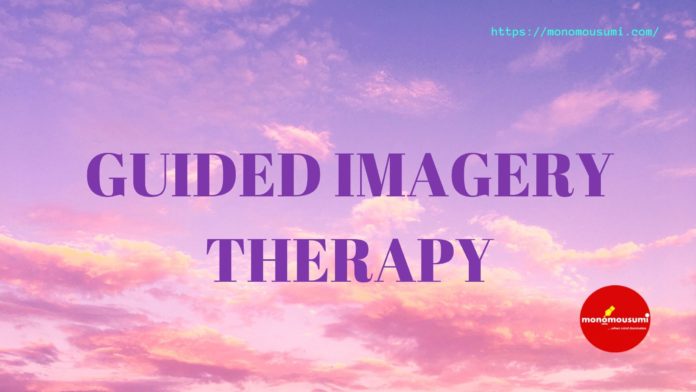“Health is Wealth” is a well known English Proverb from times immemorial. This proverb rightly suggests that if an individual maintains good health, then it is the best and the greatest wealth that he/she possesses. Health is more precious and worthy compared to other materialistic pleasures such as a lavish life full of luxury which includes having expensive houses, cars, bungalows and other materials such as gold, silver, platinum, diamond etc. Health is well defined as a state of well being and free from diseases and ailments. If a person is perfectly alright and healthy, then he has all the potential and energy to earn whatever he/she longs for. A stable and good health definitely helps an individual to achieve his/her goals, ambitions and dreams without any obstacle. Lifestyle is defined as the way each individual leads his/her life. It is like a set of rules followed by an individual in every walk of life. It varies from person to person with respect to age, gender, geographical location etc. If an individual follows a disciplined lifestyle, then that person remains happy and healthy for a long time without worrying about his/her health condition. A good lifestyle automatically follows good health. Lifestyle includes many activities right from the time we get up till the time we go to bed. Waking up early, having proper three meals per day namely breakfast, lunch and dinner, eating at proper intervals, exercising, going for a walk, reading newspapers, watching news, sleeping early, taking bath daily, praying to God, studying, drinking required amounts of water, meditating, singing, dancing, doing yoga; all of these fall under good lifestyle practices. No person is born with these practices by default, but rather has to learn, inculcate and follow in his/her life in order to be healthy. Old age people are stronger and healthier compared to the current young people as they were following a proper disciplined lifestyle. Their immunity is also strong and sound compared to the younger generations. An example is a majority of the people aged above 80 and 90 were successfully able to win over Covid and recover themselves while a few people aged younger to them were not successful enough to fight Covid. Even after getting vaccinated, old people didn’t face much of the side effects and other complications or symptoms, while the majority of youngsters experienced a lot of pain in the arms and were caught with fever. The present and current times is not as peaceful, easy, comfortable and cosy compared to that of old times. Stress, pollution, work pressure, money, wealth, greediness, upbringing of children, catering to family needs and managing the family affairs, loss of jobs and relationship problems have impacted the lifestyle of each and every individual in a wrong way. Due to these, people have lost their peace of mind and have become impatient which has indeed made them consume alcohol in large amounts, smoke cigarettes without control, face anxiety and ultimately go into depression. Depression has become very common these days because of the filthy and unhealthy lifestyle practices and activities. An idle brain also leads to health disorders. Currently depression has become so contagious that it is spreading like common flu, cough and cold. Due to the impact of lockdown and staying at home, people have lost their original lifestyles and hence are becoming obese and are least conscious about their health and lifestyle. Their sleep patterns, eating patterns, exercising patterns and work patterns have drastically changed which has made every individual more careless and casual with respect to health. People have resorted to consuming more junk and oily food along with foods containing high amounts of sugar. People keep munching chocolates, cookies and chips without any concern and care about their health. Young children who are supposed to play outside and get exposed to the outside atmosphere, are confined at home with mobile phones, laptops, iPads, TV etc. This has a very bad implication on both their physical and mental health. The lifestyle of children will get harmed and destroyed right from their growing age.
Mind body therapies are a set of healing therapies that integrate the mind’s actions and interactions along with the body functions and activities. This helps in the betterment of health and the overall well being. These are safe to the body as they do not involve any kind of complications or side effects. These techniques try to connect the different quotients such as physical, psychological, emotional, social, behaviour etc. Some of the mind body therapies practiced and in use include yoga, meditation, acupuncture, TaiChi, aromatherapy, music therapy, massage therapy, guided imagery, prayer, cognitive behaviour therapy to name a few. “Guided imagery” is one of the mind-body therapies which pertains to a focused meditation or relaxation. Focused meditation implies focusing on a specific image or object, sound or experience which is at a particular distance from the individual which thereby helps to control the mind and make it calm. This is also known as Katathym-Imaginative Psychotherapy (KIP). Guided imagery helps to reduce stress and anxiety, improves sleep, decreases pain and also reduces the symptoms of depression. There is no fixed agenda or rule to be followed in order to do this therapy. Any quiet spot like in the balcony, terrace, puja room, couch chair can be considered along with headphones if required. Guided imagery audio recordings are required. These are available on various platforms all over the internet in the form of online scripts, videos, lectures, self help books etc. and hence can be implemented for peace of mind. This technique is very simple and convenient and can be done by all irrespective of age and gender. Guided imagery is practiced by the Greeks, Chinese, Americans and Indians. The origin of this technique dates back to 1970’s where Dr. David Bressler and Dr. Martin Rossman was among the first pioneers to advocate guided imagery as a viable therapeutic option for chronic pain, cancer, and other serious conditions. This later motivated them to start and co-found the Academy for Guided Imagery in 1989. Currently Guided Imagery is a well established Complementary and Alternative Medicines. A therapist employing the Guided Imagery technique will give vocal suggestions to steer the imagery’s focus, typically urging the person to notice different sensory qualities of the scenario. For example, a person in treatment would be encouraged to imagine a serene environment, which includes aroma, fragrances, noise and sensations. As all the five senses are involved in this technique, this therapy expands beyond visualisation. Guided imagery is intended to affect both the body and the mind and during the process, breathing becomes slower and more regulated as muscles relax, resulting in a feeling of peace and relaxation. Music may be used by certain practitioners as part of their practise. The technique of guided therapeutic imagery is akin to hypnosis and other approaches for inducing a state of calm. Both strategies entail some visualisation, a concentration on the inner mental experience and a calm mindset. Hypnosis on the other hand focuses more on suggestion, whereas guided imagery emphasises more on the senses. Guided imagery uses the senses to help a person concentrate better and focus his/her attention on a specific area of concern while visualising a desirable result for a particular worry or concern. According to research, guided imagery can help in treating a variety of issues and concerns which includes stress, anxiety, depression, abuse of drugs and alcohol, grief and bereavement, post traumatic stress, relationship issues, diminished self care, along with issues pertaining to family and parenting. Medical experts frequently utilise guided imagery to treat pain management, high blood pressure and in the reduction of undesired habits such as smoking, in addition to emotional and behavioural disorders. Guided imagery is also often utilised by athletes to improve their performance. Generally guided imagery techniques are employed to target specific targets. For example, a person with cancer may use guided imagery therapy in order to visualize healthy cells along with the other organs. Guided imagery rightly falls under the voluntary category of mental imagery as it involves recalling of images from long term or short term memory, or the images created by fantasy, or a combination of both in response to the provided guidelines instructions and supervision. As a result, guided imaging is the aided simulation or re-creation of perceptual experience across sensory modalities. The process of Guided Imagery follows four steps namely image generation, image maintenance, image inspection and lastly image transformation. Image generation involves creating mental imagery based on the sensory inputs and perceptual experience, memory or fantasy. Image generation: Without the voluntary sustaining or preserving of images, a mental image is vulnerable to fast degradation with an average duration of only 250 milliseconds. This is because, in order to avoid disturbing or complicating the process of regular sensory experience, volitionally constructed mental pictures normally dissipate quickly once formed. Because mental imaging has such a short duration, the active maintenance stage of guided imagery, which is required for the succeeding stages of inspection and transformation necessitates the participant’s cognitive concentration of attention. Image inspection: A mental image can be examined once it has been created and maintained to give the basis for interpretation and modification. Inspection of visual images frequently entails a scanning procedure in which the users move their gaze over and around a picture to simulate alterations in perceptual perspective. Inspection methods can be used on images formed spontaneously as well as imagery formed in response to the facilitator’s scheduled or impromptu vocal descriptions. Image transformation: Concluding, with the assistance of the verbal instruction given by the practitioner, the content of generated mental imagery is transformed, modified or altered in such a way that images that elicit negative emotions which are indicative of suffering or those that reaffirm disability or debilitation are replaced with images that elicit positive emotion which are suggestive of resourcefulness, ability to cope and increase the degree of mental and physical capacity. The concepts that underpin the clinical psychology procedures of imagery restructuring or imagery rescripting employed in cognitive behavioural therapy are similar to those that underpin this process. As a result of this therapy, symptoms become less debilitating, pain is reduced to some extent and the coping abilities improve.
Due to the pandemic and these uncertain times, people have become frustrated and are venting out this frustration and impatience in a wrong way. In many countries people are even resorting to crime activities such as robbery, murder and other criminal activities due to loss of jobs and financial problems. Hence there are a lot of options and ways wherein each and every individual can change and adopt a different lifestyle which is very much beneficial and healthy to both the body and mind. Playing board games, mind games, carrom, video games, solving brain teasers, Mathematics and English puzzles, Sudoku helps to keep the mind and body in an active state and hence drives a feeling of relaxation, comfort and freshness to oneself. Listening to good music, motivational speakers helps to enhance and boost our confidence, fill trust and hope in ourselves. These strengthen our spirits to face any kind of discomfort and distress and thereby help us out in becoming normal and comfortable which helps us to lead a calm and peaceful life with no worries and tensions.
By Supriya K S
















